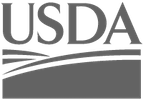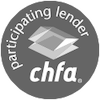
2024 began with optimism for the economy. Despite relatively high interest rates and efforts by the Federal Reserve to slow the pace of the economy in order to reduce the inflation rate, a recession was widely predicted to be avoided. That hope increased when the Fed announced it would begin reducing its benchmark interest rate in September.
Unfortunately, that optimism disappeared recently as news broke of a disappointing job market report and a jump in the unemployment rate. One key indicator of the future economy called the Sahm Rule (more on that below) was now predicting a recession.
To gauge the housing market’s direction in the end of 2024 and beyond, we need to keep a close eye on these key economic signals. Labor market trends, Fed policies, and other recession indicators will give us some good insight into the future of housing supply and demand.
Mortgage rates have already started to come down as the markets prepare for the upcoming policy change, and it’s very likely they will continue to decline as the economy adjusts. This should boost demand for homes, reverse the rise of housing inventory and keep home values appreciating.
Here’s what we’ll be watching.
Recession Indicators: Unemployment, Inflation, and the Bond Market
We’re really seeing the jobs market slow. In June, there were 179,000 jobs added to the economy. The forecast for July was 176,000, but the actual number was 114,000. This is a massive slowdown.
The job participation rate is also increasing, which means people are seeking jobs and there are more people out there trying to participate in the labor market. Private non-farm payrolls (private industry, meaning excluding government jobs) showed 136,000 jobs added in June. The forecast was 148,000.
The unemployment rate, which is one of the big things the Fed watches and references frequently, was 4.1% in June. That jumped to 4.3% in July.
It’s important to put this into context. The unemployment rate always goes up and down in response to economic conditions. In this cycle (i.e. post-COVID), the unemployment rate bottomed at 3.4% in April 2023 and it has been steadily rising ever since. This is a major indicator of a recession.
If you look all the way back to 1960, when the unemployment rate reaches a bottom and then moves higher by at least a half a percent, a recession follows. You can see this in chart below. The grey bars indicate US recessions.

The “Sahm Rule” is a recession indicator created and named after Claudia Sahm, a macroeconomist who worked at the Federal Reserve. The rule is relatively simple. It states that when the three-month average U.S. unemployment rate rises by 0.50% or more from its 12-month low, a recession is underway.
That rule was officially triggered when unemployment rate reached 4.3% in July. This had led investors to worry that the Federal Reserve waited too long to cut interest rates and we might already be in a recession.
Another reliable recession indicator is the relationship between inflation and unemployment rate. Historically, whenever headline inflation rises above the unemployment rate, a recession is either on the horizon or has already happened.
This is illustrated in the graph below, again going back to 1960. Headline inflation is shown in red and unemployment is shown in blue.

In this cycle, headline inflation crossed above the unemployment rate in June of 2021 and the gap become quite large. This corrected in May of 2023, but no recession was officially declared.
When looked at in conjunction with the Sahm rule, this is a strong reason to believe that we are already in a recession.
To take this even further, we can also look at the difference between the 10-Year Treasury yield and the 3-Month Treasury yield – also called the “yield curve”.
A healthy or normal yield curve is one where longer-term bonds have higher yields or interest rates than shorter-term bonds. For example, the 2-year Treasury might have a yield of 3% while the 10-Year has a yield of 4%.
Longer terms mean more risk, so investors demand higher returns. However, when a recession is expected, the yield curve is not normal and becomes inverted. This means shorter-term bonds have HIGHER yields than longer-term bonds.
The graph below shows the historical difference between the yields of the long-term 10-Year Treasury bond and the short-term 3-Month Treasury bond. When the line drops below 0, it means that shorter-term bonds are offering higher returns than longer-term bonds.

As you can see, every time the yield curve has inverted, a recession has immediately followed – and right now the yield curve is the most inverted it has ever been. We take this to mean a recession is at our doorstep.
Finally, just look back at the history of Fed rate cuts. Going all the way back to 1954, it’s clear that the Fed only cuts interest rates after a recession has already started or right before it happens.

So, to recap:
- Unemployment has risen for three consecutive months, triggering the Sahm rule
- Inflation significantly bypassed the unemployment rate with no recession declared
- The yield curve is the most inverted it’s ever been
- The Fed has announced it will begin cutting rates
It’s all pretty clear – if we are not already in the recession, it is at our doorstep.
How will that impact the housing market? Well, on that front we have some good news.
Housing Does Very Well in Recessions
A recession might sound scary, but recessions bring a really unique opportunity in real estate.
Recessions are good news for mortgage rates. We know this by looking at how they have responded during previous recessions. As you can see in the graph below, mortgage rates have decreased either during or immediately following each of the last six U.S. recessions.

Even though lower interest rates make housing more affordable. But even with that being so, many Americans might be hesitant to invest in real estate for fear that their home values will drop when the economy slows down.
Basic supply and demand economics say that is the opposite. We have seen it happen time and time again.
If you look back at the last six recessions, the Great Recession was the only one that had a negative impact on housing. In fact, home values have either stayed stagnant or increase during and immediately following a recession.
In the last 10 years, home prices have increased 115%, and they have gone up 39% in the last two years alone. Even in an environment with interest rates at 7%, we have only seen prices come down slightly.
Whenever the cost of borrowing goes down, more people can afford to buy a home. According to Black Knight, every 1% drop in mortgage rates makes housing affordable for 5 million more people.
People WANT to buy homes! They are just waiting for a bit until homeownership becomes more affordable. When interest rates come down and demand outpaces supply, things will change.
The Bottom Line
While an economic slowdown needs to happen to help taper inflation, it hasn’t always been a bad thing for the housing market. Typically, it has meant that the cost to finance a home has gone down, and that’s a good thing.
All signs are pointing to a recession that has either already happened or is right around the corner. Once the Fed starts cutting rates next month, more money will flood into the bond market and bring mortgage rates down.
These lower rates – combined with higher incomes and the desire to avoid increasing rent prices – will bring a flood of new buyers into the housing market. Demand will continue to overwhelm supply, and home prices will continue to appreciate.










